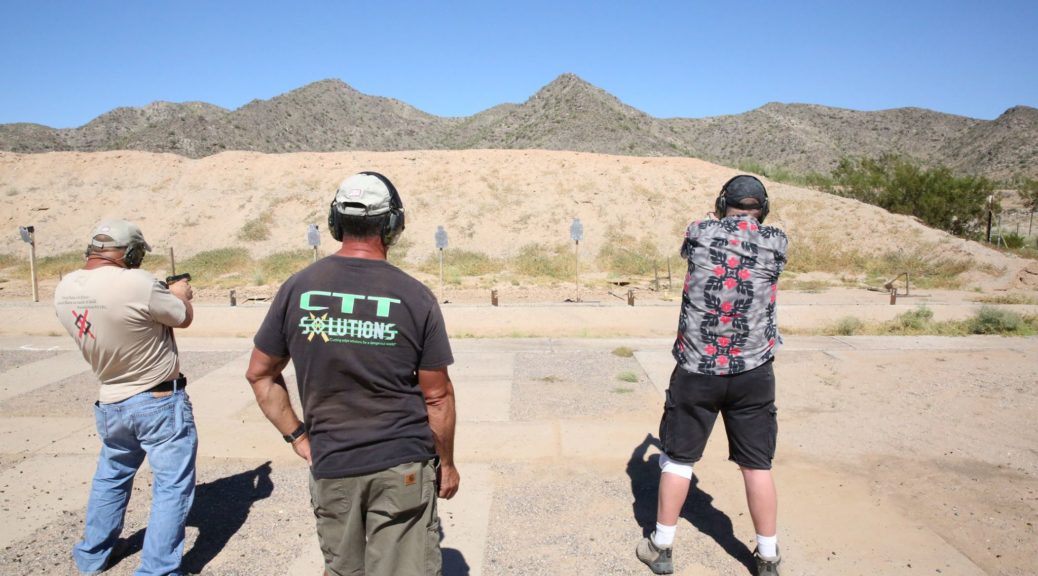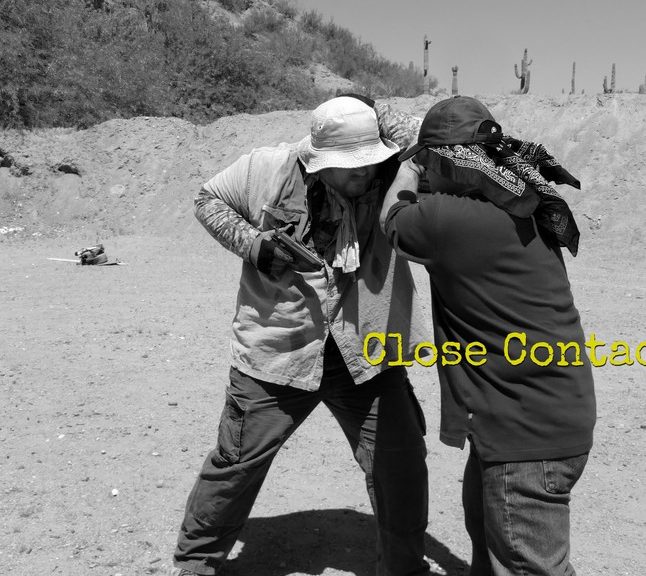I, along with my peers like Craig Douglas, Paul Sharp, Chris Fry and a few others, have been talking about the need to be able to integrate empty hand fighting methods, especially grappling, alongside firearms use for self-defense for decades. Over that time, a number of people have tried to argue that the entangled weapons fight does not happen, especially for civilians. They will try to get the idea across that somehow criminals never touch or come close to their victims, and all criminal assaults happen at distance.
Fortunately, with the prevalence of the internet and the information age and the ubiquity of video, we know how wrong that argument is. I have literally hundreds of videos showing that the entangled weapons fight, even for private citizens, happens fairly frequently. Here is a recent example. I like this video for a couple of reason. Number one, it happened this month, and number two, it happened in my city. As a matter of fact, it happened about a block away from the former location of my jiu-jitsu instructor’s academy., where I spent a lot of time, right round the same time of day this assault occurred.
Take note of a few things.
- Everyone likes to pretend that they “never let someone get too close to them”. In today’s society, there is not a chance of that being true. How do you get off a public bus and not let someone get too close? Are you going to yell “BACK OFF!” to someone behind you? You know what happens after that? The police come by and interview you and possibly arrest you for either disturbing the peace, or some version of assault. You simply don’t have the right to personal space that trumps public interaction. You will be within double arm’s distance of other people – including strangers – more often than not. Pretending otherwise is delusional.
- Take a look at how many other people were around. There were two within touching distance when the attack started. You can even see they looked and saw what was going on and they kept walking. You cannot count on outside help, nor can you assume that the bad guys won’t attack just because there is a crowd.
- Note how the very first thing the initial attacker did was grab onto the victim. That is a classic clinch position, and in fact one in which jiujitsu players spend a lot of time dealing with. And if you think about it, starting that way makes perfect sense. He had a contact weapon – the knife – and so he had to be in contact for it to have the intimidation value. Even if he had a pistol, how effective is it to stand at 10 yards away to mug someone? “Hey you, put your wallet and phone down on the ground and move away” does not work particularly well, because if it did, bad guys would be doing that all the time. Instead they move in because that is the best way to succeed. They must exert enough control over the victim to get what they need, and physical control is easier and quicker. That attachment between attacker and victim happens time and again, more often than not.
- Note how easily and quickly the fight goes to the ground. Also note how obvious it was that NEITHER side tried to go to the ground. This was not a grappling trained attacker fighting a grappling trained defender, but the consequence of fighting for your life when you don’t know how to NOT go to the ground. The typical advice to “not go the ground” is useless and moronic when you don’t put the time into learning how to stay on your feet. We all trip and fall just walking around normally at some point. Why does no one just say “never trip and fall”? Because it is obviously a stupid thing to say. Well, “don’t go to the ground in the street” is just as idiotic.
- Observe how hard it was for the defender to get back to his feet. Again, the typical keyboard warrior advice to “just get up” is shown to be vapid. If you don’t know, it is only dumb luck that can help, or the incompetence of the attackers. They also had gotten what they wanted and were less interested in continuing, which was a blessing for the good guy. Otherwise, it may have been far worse. Also observe that as he runs away, if the attacker had a gun, there is a good chance the good guy would have been shot multiple times as he fled. Just running away may not be the best answer.
To sum up, the entangled fight in real life happens again and again, whether weapons are involved or not. You can try to ignore that at your peril.


